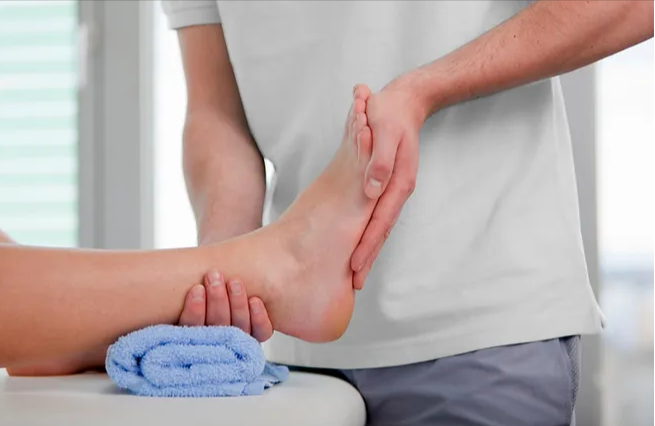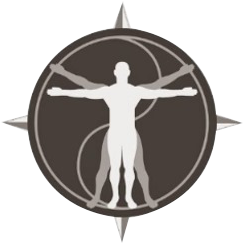Physical Therapy Exercises for Plantar Fasciitis: The Best 7 Moves to Alleviate Pain

Do you have plantar fasciitis? If so, you are well aware of how painful and frustrating this condition can be. Fortunately, there are a variety of physical therapy activities that can assist relieve discomfort. This article will go over the best 7 techniques for plantar fasciitis relief. We will also show you how to do each move correctly. So, if you suffer from this condition, be sure to attempt these exercises!
The Best 7 Exercises for Plantar Fasciitis
#1 Plantar Fascia Massage
Massage is one of the most effective ways to relax tight muscles and relieve pain in certain body parts.
Follow these steps:
- Place one foot on a little ball and sit or stand in a chair. You can also support yourself by standing on a frozen water bottle. The reason for using a frozen water bottle is that it helps to reduce pain.
- In the second step, roll the ball under your foot forward and backward. Begin just below the ball of your foot and end just before the heel.
- Roll the ball back and forth slowly 10 times for each foot.
- Perform two sets of exercises for each foot.
- This workout should be done once a day.
Finally, keep in mind that you should not experience any pain during this activity. You will just need to apply enough pressure to feel a slight stretch but not pain.
#2 Toe Curls with a Towel
Toe curls with a towel are a helpful workout for pain alleviation from plantar fasciitis.
Follow these steps:
- Place a little towel on the floor and sit on a chair with your feet over it.
- Scrunch your toes onto the towel and try to pull it toward you with your affected foot.
- Relax your toes and let go of the towel.
- Repeat this motion 10 times daily, once or twice.
#3 Seated foot stretch
A seated foot stretch may also be used to reduce muscle tension in the plantar fascia.
Follow these steps:
- Sit in a chair and cross the wounded heel over the opposing leg.
- To build tension in the arch of the foot, pull the toes toward the shin.
- Place the other hand on the bottom of the foot to feel for plantar fascia tension.
- Hold the position for 10 seconds.
- Repeat 2-3 times more.
#4 Marble Pick-Ups
Are you looking for a fun way to exercise? Marble pickup is one of the most pleasurable activities that can really benefit you.
Follow these steps:
- To begin, you can perform this exercise while sitting or sitting on a chair.
- Put a bowl on the floor and some marbles or small balls or objects (such as stones) in front of you.
- Pick up each stone with your toes and place it in the bowl.
- You should attempt to do this exercise for 5 minutes per day with each foot.
#5 Tennis Ball Roll
You’ll need a tennis ball or another little ball of similar size for this exercise. Tennis balls can be purchased at any sporting goods store. Don’t be worried if you can’t find any type of ball. You could also use a water bottle or another cylindrical object instead.
Follow these steps:
- Sit in a chair and place the ball under your affected foot.
- Roll the ball back and forth under your foot’s arch to stretch the plantar fascia ligament.
- Continue rolling for three to five minutes.
- This stretch can be done twice a day.
#6 Calf stretch
Plantar fasciitis can be worsened by muscle tension in the foot and calves. Calf muscle relaxation can help ease discomfort. People can try calf stretches.
Follow these steps:
- Place your hands against a wall.
- Straighten the injured leg’s knee and bend the other knee in front.
- Maintain a flat foot on the ground.
- Maintain the stretch for 10 seconds.
- Repeat the stretch a couple of times.
#7 Towel Stretch
When done before getting out of bed, the towel stretch is beneficial for reducing morning pain.
Follow these steps:
- Sit with your involved leg directly out in front of you.
- Wrap a towel around your foot and gradually draw it toward you, feeling the calf muscle stretch.
- Hold for 45 seconds, 2-3 times.
- Repeat 4-6 times each day.
Conclusion
Plantar fasciitis is a degenerative disorder of the thick band of tissue that extends from your heel to your toes on the bottom of your foot. It causes discomfort on the bottom of the foot around the heel, as well as even more pain after (but not during) exercise or activity. To overcome this problem, you can try the exercises listed above, as well as many others. Finally, we recommend that you always see a medical professional before starting anything.
By reading some articles here, you can learn more about what are the treatments for plantar fasciitis.

